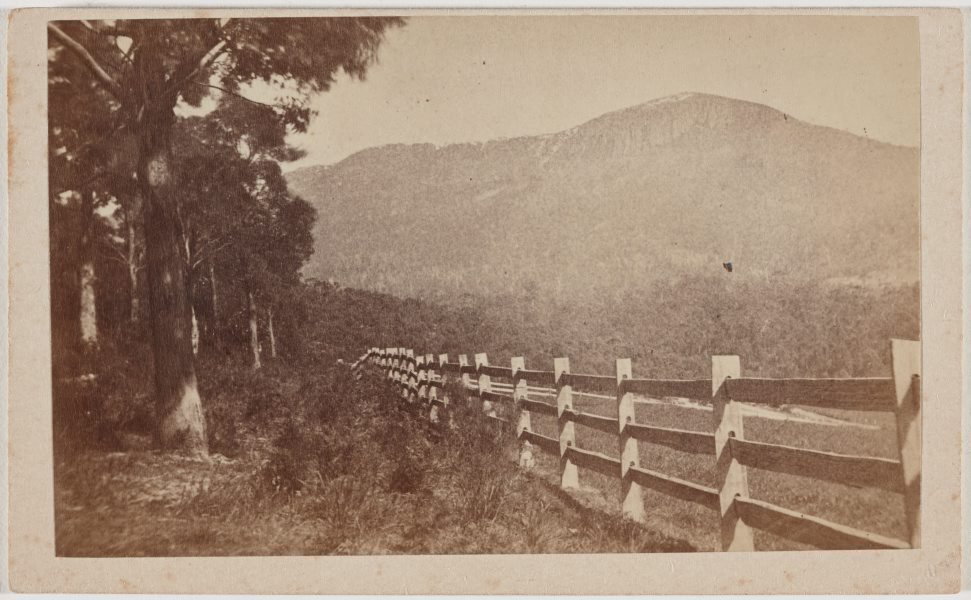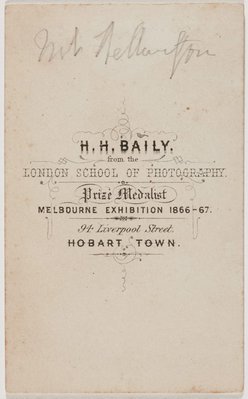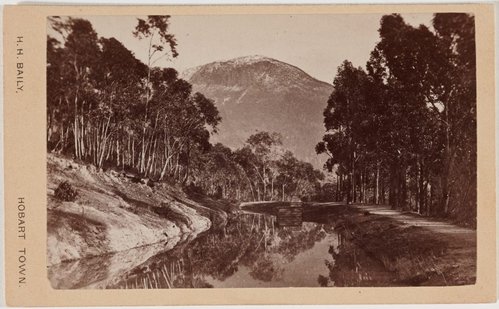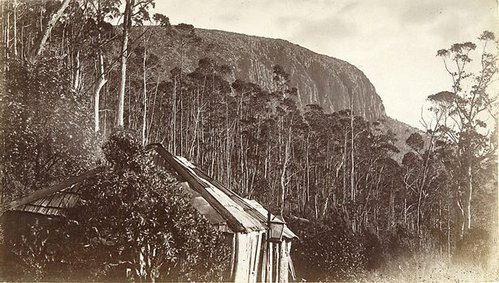-
Details
- Date
- 1867-1881
- Media category
- Photograph
- Materials used
- carte de visite
- Dimensions
- 5.7 x 9.3 cm image; 6.2 x 10.2 cm mount card
- Signature & date
Not signed. Not dated.
- Credit
- Purchased 2014
- Location
- Not on display
- Accession number
- 253.2014
- Copyright
- Artist information
-
Henry Hall Baily
Works in the collection
- Share
-
-
About
Henry Hall Baily was a Tasmanian-born professional photographer. He trained at the London School of Photography in 1861 and on return to Hobart in the mid 1860s, where he established his own firm, advertising vignettes, cartes de visite, and miniature portraits for brooches and lockets.
A carte de visite is a stiff card of about 10 x 6.4 cm, with an attached paper photograph, invented in 1854 by André-Adolphe-Eugène Disderi. They were introduced into Australia in 1859 by William Blackwood with albums arriving in 1860, aiding the collection and distribution of multiple cartes. Cartes were usually portraits and were made by the millions worldwide. Multi-lens, or ‘multiplying’ cameras were introduced in the 1860s, which were capable of producing from 2 to 32 images in quick succession, dramatically increasing the number of cartes de visite that could be made from a single photographic plate. They were easily reproduced by making paper contact prints from the glass plates, which were then cut and pasted to card.
-
Exhibition history
Shown in 1 exhibition
The photograph and Australia, Art Gallery of New South Wales, Sydney, 21 Mar 2015–08 Jun 2015
The photograph and Australia, Queensland Art Gallery, South Brisbane, 04 Jul 2015–11 Oct 2015




